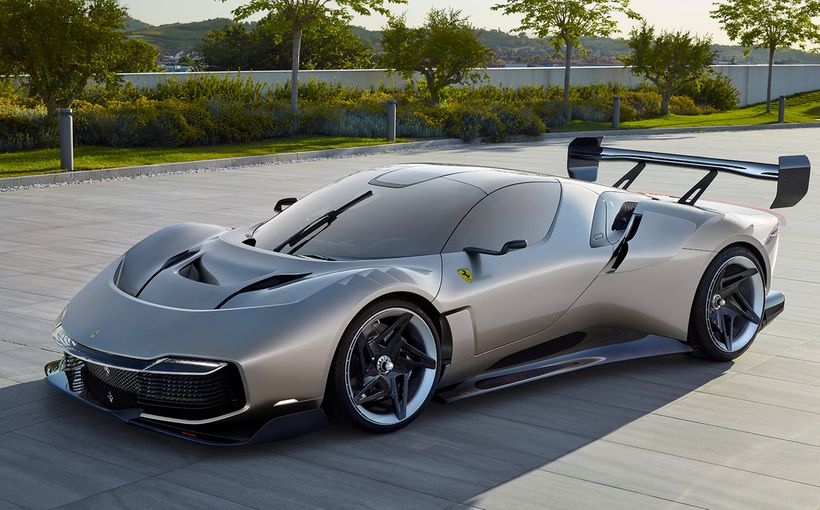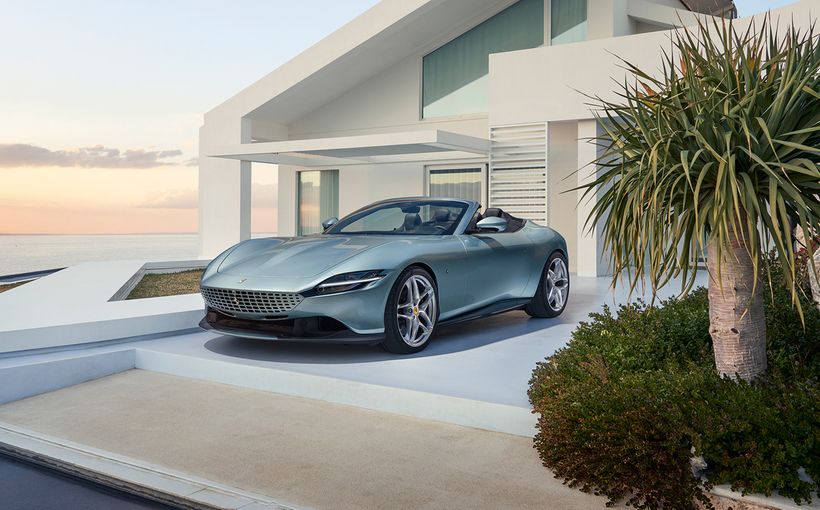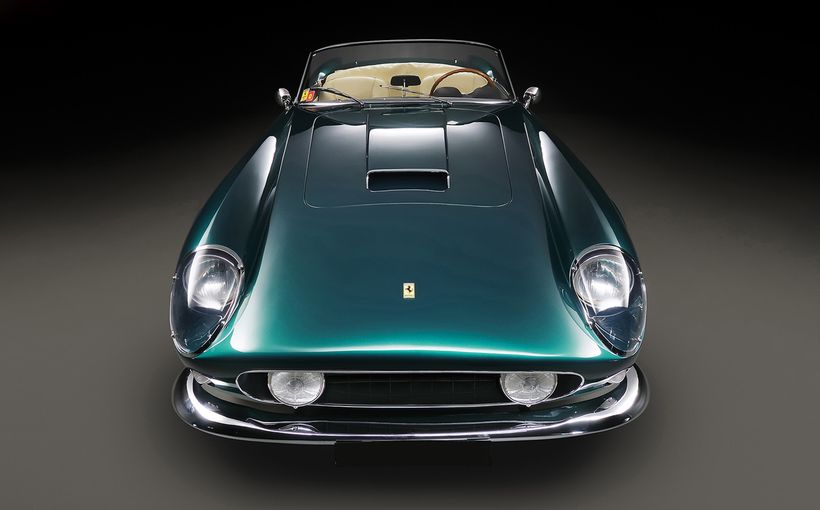Ferrari GTO: Gran Turismo Omologato - Bellissimo!

“In the Ferrari world, the GTO nameplate signifies a distinguished breed of Prancing Horses,” claims Sports Car Digest. “Always built in limited numbers and for a special purpose, the GTO cars don’t just wear a badge, but proudly display it as a manifestation of honour.”
GTO stands for Gran Turismo Omologato which in Italian means Grand Touring Homologated. In other words, GT cars designed to meet FIA homologation requirements to allow them to race. There’s only been three Ferrari GTO models. And each one is special and unique.

Image: https://en.wheelsage.org/
250 GTO (1962-1964)
Motor racing has a brutal history when it comes to cars that have reached their use-by dates. The cut-throat nature of the sport, in which winning is everything, ensures that yesterday’s track heroes are usually abandoned when race teams upgrade to the latest and fastest.
Although it’s hard to imagine today, the legendary 250 GTO - arguably the most valuable collector car in the world - suffered the ignominy of this treatment in the mid-1960s when replaced by the more advanced rear-mid-engine 250 LM (Le Mans).
By the end of the decade, the front-engine 250 GTOs were obsolete in racing terms. So, as well-used and outdated race cars, they changed hands for around USD$6000-$8000. In fact, the lowest documented price paid was only $2500 at a US auction in 1969.

Image: https://en.wheelsage.org/
However, from the late 1970s, classic car values soared and the once overlooked 250 GTO was a major beneficiary. The current record price paid at auction was USD$51.7 million in 2023. And the highest price paid for any Ferrari was also a 250 GTO, which in 2018 sold for a staggering USD$70 million!
So why is this car so coveted? Its rarity for starters, as only 36 examples were built by Ferrari and remarkably all 36 have survived and are accounted for.
It’s also the final evolution of the iconic 250 GT, the last of Maranello’s magnificent front-engine GT racers and one of the best-looking Ferraris ever.

Image: https://en.wheelsage.org/
And it was very successful in competition. During several years at the top level of international GT racing, the 250 GTO won numerous titles and amassed a staggering total of more than 300 race wins. So, in terms of peerless collectability, it ticks every box.
The 250 GTO was developed to homologate a premium performance variant of the 250 GT for the FIA’s Group 3 Grand Touring Car category in 1962. Ferrari wanted to ensure it had the edge on new British rivals including Jaguar’s E-Type Lightweight and Aston Martin’s DB4 GT Zagato plus Carroll Shelby’s potent V8 Cobra roadsters (and later Daytona coupes) from the US.
Development was headed by Ferrari chief engineer Giotto Bizzarrini. The steel tube-frame chassis was derived from the 250 GT Berlinetta SWB, featuring twin-wishbone front suspension, a leaf-spring live rear axle with Watts linkage, four-wheel disc brakes and Borrani wire wheels.
Bizzarrini increased chassis stiffness and reduced weight. He also lowered the centre of gravity and reduced its polar moment of inertia by mounting the engine lower and further rearward. Ancillaries were also lowered to enhance the CoG effect and ensure a lower front body profile to minimise frontal area.

Image: https://en.wheelsage.org/
The exquisite Colombo-designed 60-degree 3.0-litre V12 was race-proven, having powered Ferrari’s Testa Rossa prototype to multiple victories at the Le Mans 24 Hour. In true Ferrari tradition, the 250 GTO’s name denoted the 250cc displacement of each engine cylinder.
The Tipo 168/62 V12 featured single overhead camshafts, 24 valves, dry-sump lubrication and six 38DCN twin-choke Weber carburettors, producing 300bhp (221kW) at 7500rpm and 217ft/lbs (294Nm) at 5500rpm. It was one of few engines capable of 100bhp/litre. The gearbox was a new full-synchromesh five-speed unit.

Image: https://en.wheelsage.org/
Although Enzo Ferrari was famously quoted as claiming “aerodynamics are for people who can’t build engines” Bizzarrini knew great engines were even greater when a car’s high-speed airflow was unhindered.
He used wind-tunnel facilities at Pisa University, plus track-testing of prototypes in both racing (including Le Mans in 1961) and private trials, to refine the shape of exquisite aluminium bodywork that combined minimal drag with high-speed stability and efficient thermal management.
Final track-testing confirmed that the production prototype was demonstrably faster than the 250 GT SWB and manufacture of the production cars with hand-crafted Scaglietti bodies commenced in late 1961. The 250 GTO’s purposeful and voluptuous silhouette is one of its greatest assets.
However, Bizzarrini was one of several key staff who quit Ferrari at around the same time due to the infamous ‘Palace Revolt’ industrial dispute. New chief engineer Mauro Forghieri completed preparations for the 1962 season, which included ongoing body development with Scaglietti.


Image: https://en.wheelsage.org/
Published specifications are far from consistent, but the weight of evidence suggests the 250 GTO tipped the scales at less than 1000kg, could accelerate from 0-100km/h in 6.0 seconds and top 170mph (270km/h). Its emphatic success in GT racing confirms those figures were of ‘supercar’ standard in the early ‘60s.
Of the 36 examples produced, 33 cars had the original 1962-63 bodywork (Series 1) and three with 1964 bodywork (Series 2). Another four of the Series 1 cars were retrofitted with Series 2 bodies by the factory.
The streamlined Series 2 redesign by Forghieri and Mike Parkes was aimed at keeping the 250 GTO competitive for another two seasons (1964-65).
This was because the FIA did not approve the new 250 LM for GT racing in 1964, as a furious Enzo Ferrari had intended, because its rear-mid-engine design was too far removed from the 250 GT to be approved as an ‘evolution’ like the 250 GTO. The 250 LM instead raced in the prototype class until 1966, when it was homologated as a Group 4 sports car under new FIA rules.

Image: https://en.wheelsage.org/
288 GTO (1984-1987)
The return of such a revered nameplate stemmed from Enzo’s concern that increasing gentrification of the marque’s GT models in the late 1970s (like the luxurious 400 Automatic) risked losing the raw-edged and rewarding driving experience which had characterised Ferrari Gran Turismos from the outset.
With ferocious mid-mounted twin-turbocharged V8 power, at a time when turbocharging had become dominant in top echelons of motor sport, the new 288 GTO showed Ferrari had returned to its racing-inspired roots. Indeed, the 1960s original provided divine guidance for a resurrection in the 1980s, given the rapid rise in appreciation and value of the 250 GTO at the time.
Ferrari had assessed the 288 GTO’s suitability for competition use in the FIA’s new Group B category introduced in 1982 and tailored its design and production volumes to ensure homologation.

Image: https://en.wheelsage.org/
Group B was designed to replace multiple production car-based categories in racing and rallying with a single set of rules, tailored for mid-engine two-seaters with minimal technical restrictions and unlimited power outputs (what could possibly go wrong). Carmakers had to produce a minimum 200 road-legal examples for homologation and only 20 examples of any ‘evolution’ models.
Whether Ferrari was planning to compete in Group B rallying or racing or both is not clear, but the 288 GTO would have been formidable. Sadly, it never got to follow in its predecessor’s tyre tracks as the wildly out of control Group B category (couldn’t see that coming!) was axed in 1986.
To save time and money, the 288 GTO (like the 250 GTO) used an existing model as the starting point. In this case the iconic 308 GTB, but by the time chief engineer Nicola Materazzi and stylist Leonardo Fioravanti had finished, there was not much left of its donor other than a loose visual resemblance. As a result, the 288 GTO is often described as looking like a 308 on steroids.

Image: https://en.wheelsage.org/
They shared similar steel tube-frame chassis design principles, but the GTO’s wind-tunnel-tuned bodywork was an amalgam of lightweight materials including fiberglass, Kevlar and carbon-fibre composites, which lowered the centre of gravity and optimised handling and acceleration.
Bulging fenders housed wider tyres/track widths and a deeper front spoiler incorporated four driving lights. Fioravanti also paid homage to the original GTO by including vertical engine-cooling slots (now behind the rear wheels given its mid-engine design) and integral rear spoiler.
The V8 engine remained mid-mounted, but now longitudinal rather than transverse in the 308. This was paired with a five-speed trans-axle, with the increase in drivetrain length requiring the rear wheels to be moved 200mm rearwards. The longer wheelbase enhanced stability.

Image: https://en.wheelsage.org/
The 308’s boot was sacrificed to provide sufficient space for the engine’s two turbochargers and intercoolers. And what an engine it was, given Materazzi’s promise to squeeze 400bhp (294kW) from 3.0 litres, or a whopping 133bhp/litre.
Here was more homologation influence, given a slight drop in cylinder bore diameter to lower the displacement from the 308’s 2927cc to 2855cc. This was to comply with the FIA’s equivalency formula to align naturally-aspirated and forced-induction engines (in this case 2855cc x 1.4 = 3997cc) which just snuck in under Group B’s 4.0-litre limit. It also explains the 288’s model name: 2.8 litres/eight cylinders.
Although based on the 308’s Tipo F106 V8, the GTO version was renamed F114B. With DOHC cylinder heads and 32 valves, it was armed with the finest internals and fed by Weber-Marelli fuel injection. Materazzi’s expertise in turbocharging ensured sublime packaging of two Japanese IHI turbochargers and Behr horizontal intercoolers running 0.8 bar of boost.

Image: https://en.wheelsage.org/
This powerhouse produced the promised 400bhp (298kW) at 7000rpm plus 366 ft/lbs (496Nm) of torque at 3800rpm. With its agile 1159kg kerb weight (about 240kg lighter than a 308 GTB) the 288 GTO could rocket from 0-100km/h in 4.9 seconds and reach a top speed of 189mph (302km/h), making it one of the world’s fastest street-legal production cars of the 1980s.
Although a minimum build of 200 was required for Group B homologation, overwhelming customer demand resulted in the production run stretching to 272 examples, which were all finished in the same ‘Rosso Corsa’ or Racing Red body colour.
Ferrari also built six 288 GTO ‘Evoluzione’ (evolution) models in 1986 strictly for competition use featuring a lighter and stiffer chassis, more aggressive aerodynamics, huge brakes and a specially developed high-boost engine producing 650bhp (485kW) at 7800rpm. It had a staggering top speed of 225mph (362km/h).
Sadly, the sudden axing of Group B in 1986 ensured that the Evoluzione was also shelved. However, its development was not wasted, as numerous styling and mechanical elements influenced the 288 GTO’s awesome successor – the F40.

Image: https://en.wheelsage.org/
599 GTO (2010-2012)
Ferrari’s third GTO saw the return of a front-engined V12 configuration, but unlike the 250 GTO and 288 GTO it was not designed to comply with any race homologation requirements. Even so, it was the fastest ever Ferrari road car when released.
The third-gen GTO was one of several supercar variants of Ferrari’s 599 GTB Fiorano. It was effectively a road-legal version of the extreme 599XX and 599XX Evoluzione track day cars.
The 599 GTB Fiorano model name was an amalgam of its large 6.0-litre engine displacement (5999cc), Gran Turismo Berlinetta design (GTB) and Ferrari’s Fiorano test track in Maranello.

Image: https://en.wheelsage.org/
Monstrous outputs of 456kW (612bhp) and 608Nm (448 ft/lbs) ensured its naturally-aspirated Tipo F140C V12 set new power and torque records for Ferrari GT cars, easily exceeding the 100bhp/litre supercar benchmark.
The 599 GTB Fiorano was also the last V12 Ferrari to offer a manual gearbox, given that most buyers opted for the new semi-auto six-speed ‘F1 SuperFast’ transmission with manual paddle-shifters on the steering wheel and shift-times measured in milliseconds.
Ferrari also broke with tradition by replacing its signature welded steel-tube chassis with a unitary design made from pressed aluminium, which not only boosted rigidity but was pivotal in its relatively light 1690kg kerb weight. The 599 was also equipped with driver-adjustable semi-active dampers.

Image: https://en.wheelsage.org/
Its purposeful styling, refined in the wind-tunnel, avoided the need for a large rear spoiler by harnessing the power of high-speed airflow. With ‘ground effect’ underfloor venturis and ‘flying buttress’ rear roof pillars, the 599 was claimed to generate 160kg of downforce at 300km/h, clock 0-100km/h in only 3.7 seconds and top 330km/h (205mph).
This provided the ideal basis for the new 599 GTO launched in 2010, having set a new lap record at Fiorano which authenticated Ferrari’s claim to be its fastest ever road car. The GTO version of the 6.0-litre V12 raised the standard engine’s power output to a staggering 493kW (661bhp) at 8250rpm and 620Nm (457 ft/lbs) at 6500rpm.

Image: https://en.wheelsage.org/
The GTO’s semi-auto six-speed transmission shared the same multiple-shift program (ie holding the upshift or downshift paddles for longer triggered multiple rapid-fire shifts) and exhaust system as the wilder 599XX. Huge carbon-ceramic disc brakes provided organ-displacing stopping power.
The 1605kg GTO was also about 100kg lighter than the standard GTB, thanks to use of thinner aluminium and window glass in its construction.
Ferrari claimed the 599 GTO could do 0-100km/h in under 3.3 seconds, with a top speed exceeding 335km/h (208mph). The production run was limited to 599 examples.
The letters ‘GTO’ will always hold a special place in Ferrari’s long and colourful history. The stratospheric prices paid for examples of the original model will attest to that. It is one of the world’s greatest Super Models.








